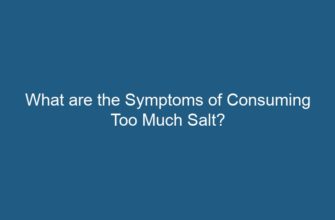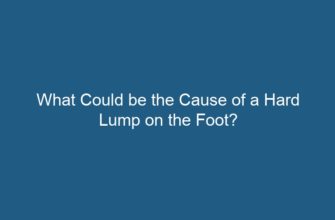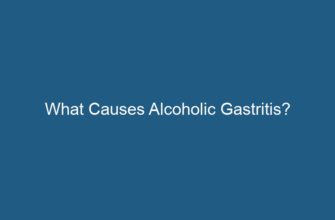Abdominal pain is a common complaint that can arise from various causes. When the pain is on the left side of the abdomen, it can indicate underlying conditions that require medical attention. This article aims to explore the possible causes, methods of diagnosis, and treatment options for left-sided abdominal pain.
- 1. Introduction
- 1.1 Anatomy of the Left Side Abdomen
- 2. Common Causes of Left-Sided Abdominal Pain
- 2.1 Gastrointestinal Causes
- 2.2 Urological Causes
- 2.3 Gynecological Causes
- 2.4 Musculoskeletal Causes
- 3. Diagnosis of Left-Sided Abdominal Pain
- 3.1 Medical History and Physical Examination
- 3.2 Laboratory Tests
- 3.3 Imaging Studies
- 4. Treatment Options for Left-Sided Abdominal Pain
- 4.1 Medications
- 4.2 Lifestyle Modifications
- 4.3 Surgical Interventions
- 5. Frequently Asked Questions (FAQs)
- FAQ 1: Can left-sided abdominal pain be a sign of a heart attack?
- FAQ 2: When should I seek immediate medical attention for left-sided abdominal pain?
- FAQ 3: Can left-sided abdominal pain in women be related to pregnancy?
- FAQ 4: Can stress cause left-sided abdominal pain?
- FAQ 5: What lifestyle changes can help manage left-sided abdominal pain associated with gastrointestinal conditions?
- FAQ 6: Can left-sided abdominal pain in children be serious?
- 6. Conclusion
1. Introduction
Abdominal pain is a distressing symptom that can range from mild discomfort to severe agony. Understanding the causes and symptoms associated with left-sided abdominal pain is crucial for early diagnosis and appropriate treatment.
1.1 Anatomy of the Left Side Abdomen
The left side of the abdomen contains several essential organs, including the stomach, spleen, left kidney, left adrenal gland, part of the small intestine, and a portion of the colon. Any problem affecting these organs can lead to left-sided abdominal pain.
2. Common Causes of Left-Sided Abdominal Pain
Left-sided abdominal pain can be attributed to numerous factors. Here are some of the most common causes:
2.1 Gastrointestinal Causes
a) Gastritis: Inflammation of the stomach lining can cause pain and discomfort on the left side of the abdomen. It is often accompanied by symptoms such as indigestion, bloating, and nausea.
b) Peptic Ulcer Disease: Ulcers that develop in the stomach or the first part of the small intestine can cause sharp, burning pain on the left side. This pain may worsen with eating or on an empty stomach.
c) Diverticulitis: Inflammation or infection of small pouches in the colon, known as diverticula, can lead to left-sided abdominal pain, usually accompanied by fever, change in bowel habits, and tenderness.
d) Irritable Bowel Syndrome (IBS): IBS can cause cramping, bloating, and left-sided abdominal pain, often associated with changes in bowel movements.
2.2 Urological Causes
a) Urinary Tract Infection (UTI): Infections of the bladder or kidneys can produce pain and discomfort in the lower left abdomen. Other symptoms may include frequent urination, burning sensation, and cloudy urine.
b) Kidney Stones: The presence of kidney stones in the left kidney can cause severe pain in the left flank region, radiating towards the left lower abdomen. This pain can be intermittent and accompanied by blood in the urine.
c) Renal Colic: Sudden, severe left-sided abdominal pain caused by the passage of a stone through the ureter is known as renal colic. It is often associated with urinary symptoms and requires immediate medical attention.
2.3 Gynecological Causes
a) Ovarian Cysts: Cysts that develop in the ovaries can cause pain on the left side of the abdomen, especially if they rupture or twist. Other symptoms may include irregular periods, bloating, and pelvic pain.
b) Ectopic Pregnancy: When a fertilized egg implants outside the uterus, usually in the fallopian tube, it can cause left-sided abdominal pain, along with vaginal bleeding and dizziness. Ectopic pregnancies are medical emergencies and require immediate intervention.
c) Pelvic Inflammatory Disease (PID): Infection of the female reproductive organs, such as the uterus, fallopian tubes, or ovaries, can lead to left-sided abdominal pain, particularly during sexual intercourse or menstruation.
2.4 Musculoskeletal Causes
a) Muscle Strain: Overexertion, heavy lifting, or sudden twisting movements can strain the muscles on the left side of the abdomen, causing localized pain that may worsen with movement.
b) Costochondritis: Inflammation of the cartilage that connects the ribs to the breastbone can cause left-sided abdominal pain, especially when taking deep breaths or coughing.
3. Diagnosis of Left-Sided Abdominal Pain
When experiencing left-sided abdominal pain, seeking medical evaluation is essential to determine the underlying cause. The diagnostic process may involve:
3.1 Medical History and Physical Examination
The healthcare provider will inquire about the duration, intensity, and characteristics of the pain. They may also perform a physical examination to assess tenderness, swelling, or abnormalities in the abdomen.
3.2 Laboratory Tests
Various blood and urine tests can help identify infections, inflammation, or other abnormalities that may be causing the pain. These may include complete blood count (CBC), urinalysis, and inflammatory markers.
3.3 Imaging Studies
a) Ultrasound: This non-invasive imaging technique uses sound waves to produce real-time images of the abdominal organs, helping to identify abnormalities such as gallstones, kidney stones, or ovarian cysts.
b) CT Scan: Computed Tomography (CT) scan provides detailed cross-sectional images of the abdomen, aiding in the diagnosis of conditions like diverticulitis, appendicitis, or gastrointestinal tumors.
c) MRI Scan: Magnetic Resonance Imaging (MRI) uses powerful magnets and radio waves to generate detailed images of the abdominal organs, assisting in the evaluation of conditions like uterine fibroids or ovarian tumors.
4. Treatment Options for Left-Sided Abdominal Pain
The treatment for left-sided abdominal pain depends on the underlying cause. Here are some common treatment options:
4.1 Medications
a) Analgesics: Over-the-counter pain relievers, such as acetaminophen or ibuprofen, can help alleviate mild to moderate pain associated with conditions like gastritis or muscle strain.
b) Antibiotics: If an infection is causing the pain, such as in the case of UTIs or PID, antibiotics may be prescribed to eliminate the underlying infection.
c) Antispasmodics: Medications that reduce muscle spasms, such as those occurring in IBS, can help relieve left-sided abdominal pain associated with this condition.
4.2 Lifestyle Modifications
a) Dietary Changes: Avoiding trigger foods, such as spicy or fatty foods, can help manage conditions like gastritis or peptic ulcer disease. Increasing fiber intake can relieve symptoms of diverticulitis and IBS.
b) Stress Management: Since stress can exacerbate certain gastrointestinal conditions, engaging in stress-reducing activities like exercise, meditation, or counseling can be beneficial.
4.3 Surgical Interventions
a) Appendectomy: In cases of appendicitis, surgery to remove the inflamed appendix, known as an appendectomy, is often necessary to prevent complications.
b) Ovarian Cystectomy: Surgical removal of large or persistent ovarian cysts may be required if they are causing significant pain or other complications.
c) Nephrolithotomy: When kidney stones are too large to pass naturally, a surgical procedure called nephrolithotomy may be performed to remove or break up the stones.
5. Frequently Asked Questions (FAQs)
FAQ 1: Can left-sided abdominal pain be a sign of a heart attack?
No, left-sided abdominal pain is not typically associated with a heart attack. However, it is essential to be aware that some individuals may experience referred pain, where they perceive pain in a different area of the body, such as the abdomen, during a heart attack. If you suspect a heart attack, seek immediate medical help.
FAQ 2: When should I seek immediate medical attention for left-sided abdominal pain?
If you experience severe, persistent abdominal pain, particularly if accompanied by symptoms such as fever, vomiting, blood in the stool or urine, or difficulty breathing, it is crucial to seek immediate medical attention, as these may indicate a serious condition or a medical emergency.
FAQ 3: Can left-sided abdominal pain in women be related to pregnancy?
Yes, left-sided abdominal pain in women can sometimes be related to pregnancy, particularly in the case of ectopic pregnancies. Ectopic pregnancies are medical emergencies and require immediate medical intervention. If you are experiencing left-sided abdominal pain and suspect you may be pregnant, seek medical evaluation promptly.
FAQ 4: Can stress cause left-sided abdominal pain?
While stress itself may not directly cause left-sided abdominal pain, it can exacerbate certain gastrointestinal conditions such as gastritis or irritable bowel syndrome (IBS), leading to abdominal discomfort or pain. Engaging in stress management techniques may help alleviate symptoms.
FAQ 5: What lifestyle changes can help manage left-sided abdominal pain associated with gastrointestinal conditions?
In cases where gastrointestinal conditions contribute to left-sided abdominal pain, adopting certain lifestyle modifications can be beneficial. These may include avoiding trigger foods, increasing fiber intake, staying hydrated, and engaging in stress-reducing activities.
FAQ 6: Can left-sided abdominal pain in children be serious?
Left-sided abdominal pain in children can have various causes, ranging from mild conditions to more serious ones. It is always important to seek medical evaluation for persistent or severe pain, as children may have difficulty expressing their symptoms accurately. A healthcare professional can provide an accurate diagnosis and appropriate treatment.
6. Conclusion
Left-sided abdominal pain can be a symptom of various underlying conditions, including gastrointestinal, urological, gynecological, and musculoskeletal causes. Seeking prompt medical attention and appropriate diagnostic tests is crucial to identify the cause and initiate the most suitable treatment. By understanding the potential causes and treatment options, individuals can make informed decisions about their health and well-being.










